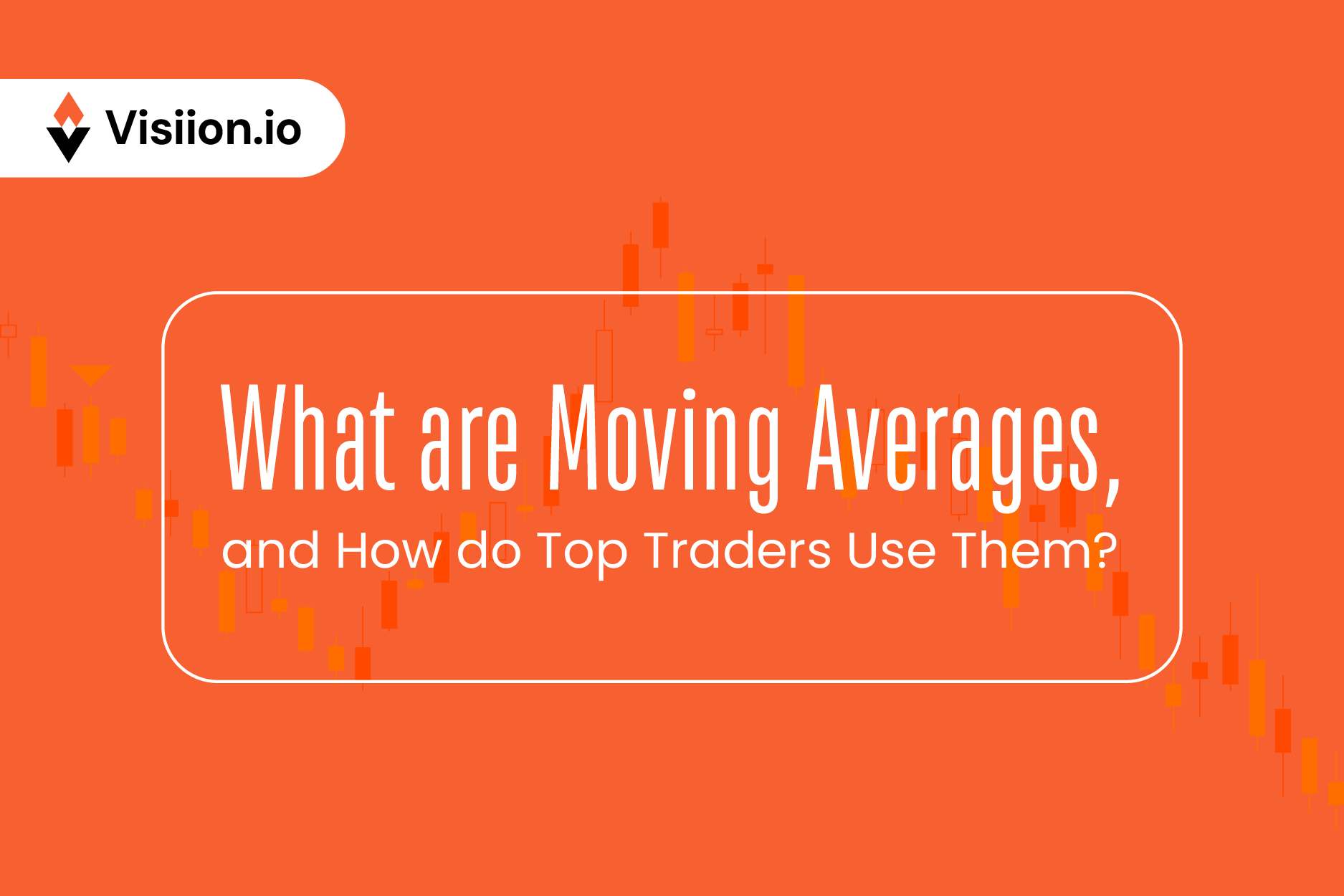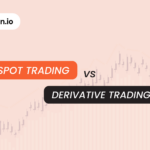How Top Traders Use Moving Averages?
Traders use different tools and indicators to create the most effective trading setup for themselves. One of the most important indicators in these setups is Moving Average (MA.) This one is quite old and finds its roots in the traditional trading.
It’s an indicator that offers a clear view of price action by eliminating noises from the surroundings. Result? Traders find out trends that are generally hidden under the short-term market noise. While the Moving Average is a traditional indicator, it is still a favorite indicator for traders. Reason? Well, all trading activities, cryptos, or other assets are governed by human instinct. And that’s exactly what Moving Averages reflects.
In this blog, we will dissect Moving Averages, their different types, and how top traders use them. So, without much ado, let’s get started.
What is a Moving Average?
A moving average is a statistical calculation of various data points taken over a defined number of periods. For trading activities, these data points are the closing prices of the asset under consideration.
When you sum up these closing prices over a fixed period and divide them by the total number of points taken into consideration, the value you get is plotted on the chart. With each new closing point, a new data point is added, and hence, it’s known as a “moving average.”
But why exactly do a lot of traders swear by the moving Average? Well, the main reason is that it smooths out the erratic moves and offers an idea of where the price is trending over time.
What Are the Different Types of Moving Averages?
Moving averages vary slightly based on how they are calculated. The most common versions are:
- Simple Moving Average (SMA)
- Exponential Moving Average (EMA)
- Weighted Moving Average (WMA)
- Smoothed Moving Average (SMMA)
The idea behind each version is to grab the immediate market mood and preserve the broader trend. Now, let’s understand each one of them step by step.
Simple Moving Average (SMA)
This one is the most commonly used and simplest moving Average. It is calculate by adding the crypto asset over a chosen time period. Once done, it’s then divided by that same number of period. The final value is plotted over the chart. So whenever you see a 10-days Simple Moving Average, it will be the mean of the closing prices of the past 10 days.
Advantages
- Easy to understand and compute.
- Smooth out very short-term fluctuations.
Drawbacks:
- Each period has equal weight in the calculation, so a price event that happened 10 days ago can still affect the current Average to the same degree as yesterday’s price.
- It can lag behind the real-time market because it gives equal importance to older data.
Traders who use SMAs generally prefer them as they are simple and consistent for the long term. The best example is a 200-day SMA. This one gives a broader signal of market direction.
Exponential Moving Average (EMA)
The Exponential Moving Average gets a bit complex. It’s designed to add more weight to the recent price data. The logic is that this method can help capture recent trends. The only problem? The calculation is a bit complex. However, as it gives more weight to recent price trends, a lot of traders consider it to be more accurate.
Advantages
- Responds more rapidly to sudden price changes.
- It can provide faster signals about shifting market dynamics.
Drawbacks
- Because of that responsiveness, EMAs might react to temporary spikes or dips, potentially creating more “noise” in certain conditions.
Generally, short-term traders who want to capture quick momentum shifts prefer EMAs. The best example is the usage of 12-day EMA, and 26-day EMA is MACD (Moving Average Convergence Divergence.)
Weighted Moving Average (WMA)
A Weighted Moving Average is similar to an EMA in that it gives more significance to recent price data. The only difference is the approach used for the weighting. Instead of using an exponential formula, a WMA multiplies the oldest price in the series by 1, the next oldest price by 2, the next one by 3, and so on. This goes up to the most recent price multiplied by the total number of periods. Then, the sum of all these products is divided by the sum of the weighting factors.
Advantages
- The weighting is more transparent and can be adjusted to place the desired emphasis on recent data.
- Often smoother than the EMA, depending on specific settings.
Drawbacks
- Similar to the EMA, it can be prone to whipsaws in choppy markets.
- Requires more manual calculation if done without automated tools.
Some traders use WMAs to get a fine-tuned view of price movement while still retaining some emphasis on the most recent activity.
Smoothed Moving Average (SMMA)
A Smoothed Moving Average resembles the EMA in that it does not drop old data from the calculation. Instead, it keeps track of all price data over time and applies a smoothing factor. The idea is to remove the impact of the abrupt movements as compared to the EMA.
Advantages
- Very steady line on the chart, which reduces false signals in sideways markets.
- It can be helpful for capturing the “big picture” of an asset’s price momentum.
Drawbacks
- More lag than a faster-moving average like the EMA.
- It may miss certain short-lived market opportunities because of its smoothing.
Traders sometimes use SMMA to get an idea about the market’s general bias without getting into short-term turbulence.
What Are the Benefits of Using Moving Averages?
Moving Average has remained one of the most important parts of a lot of trading setups. That’s why a lot of traders would prefer Moving Averages over other indicators. Traders prefer Moving Averages because they:
- Shows trend direction and momentum using actual price data
- Reduces subjective judgment in market evaluation
- Helps navigate 24/7 crypto volatility
- Slopes (up or down) may indicate shifting price bias
- Multiple MAs reveal alignment or conflict across different timeframes
- Easy to integrate into automated or discretionary strategies
In short, moving averages make trading simple and effective. Best part? They don’t need constant, minute-by-minute monitoring. You can easily integrate them with your trade setup and can even automate the entire trade setup.
Now let’s understand how top traders use Moving Averages
How Top Traders Use Moving Averages?
Well, there are multiple ways crypto traders use MA. Some of the most common methods include:
- Moving Average Crossover: Here, two or more Mas are plotted on a chart. A short-term MA might cross above a longer-term MA at certain points, which some interpret as upward momentum. Conversely, if the short-term MA crosses below, it could suggest the opposite. Crossover methods are pretty simple to program into any trading tool. That’s why they are the most widely utilized methods.
- Price vs. MA: Another option is to track when the price action stays above an MA line or dips below it. If the price action is sustained above a certain MA, it might be a symbol of strength. But if the candle closes below that MA, it might indicate that the upward trend is reversing or at least weakening.
- Support and Resistance: Some traders use specific moving averages like the 50-day or 200-day moving averages as potential support or resistance. Let’s say the price of an asset is constantly bouncing off from an MA during the uptrend. Then, that particular MA is treated as a strong support.
- Slope Analysis: If you observe the MA slope, you can easily gauge the momentum of the market. A sharply rising EMA, for instance, may reflect strong buying pressure. But a flattening moving average might imply that the trend is losing steam.
Note: These are the most common and generic methods. Top traders never solely rely on these methods. Instead, they combine multiple other data like candlestick patterns, volume, and other indicators.
How Traders Combine Moving Averages with Other Indicators?
A single moving average line can be helpful, but many traders prefer a toolkit approach. They mix multiple indicators with Moving Averages as their base. Here are some basic setups they use:
MACD (Moving Average Convergence Divergence)
This indicator itself is built from EMAs. It’s designed to show the relationship between two moving averages of an asset’s price. Traders might watch MACD’s histogram or its signal line crossovers to spot shifts in momentum.
RSI (Relative Strength Index)
While the MA offers a perspective on trend direction, RSI provides an idea of whether an asset might be overbought or oversold. If the MA indicates an uptrend but the RSI is showing overbought conditions, some might conclude that the trend is extended.
Volume Analysis
Tracking trade volume helps see how much conviction is behind price moves. If the price moves above a moving average on a high volume, it may be interpreted as stronger confirmation than if the same move happens on a low volume.
Each of these tools provides different information. Moving averages can sometimes confirm signals that these other indicators provide. This offers traders a more robust picture of market behavior.
Limitations of Using Moving Averages
Moving averages are just like any other indicators. With their advantages, they come with some limitations, too. Here are some of these limitations:
- Moving averages rely on historical data and always lag behind the current price.
- A 50-day SMA can be influenced by older market conditions that might not reflect today’s fast-paced environment.
- Sideways or choppy markets often lead to frequent whipsaws and false signals around MAs.
- Many traders look for extra confirmation from volume shifts or candlestick patterns.
- The chosen time period affects chart interpretation; a 200-day MA is less reactive than a shorter 5- or 9-day MA.
- MAs alone don’t predict future movement; they are part of a bigger analytical approach.
In short, moving averages are not a magic indicator that you can use to make a consistent profit. But they definitely are a powerful weapon in your trading arsenal. Combining them with other indicators might give you an edge over your competitors.
Wrapping Up
Moving averages are among the most widely recognized technical analysis indicators, and for good reason. They provide a simple and quick view of the market’s underlying trend. The best part? They smoothen out the daily noise.
We hope this blog has offered you the much-needed information about Moving Averages. If you are into crypto trading and investment, do not forget to explore our website. You’ll find tonnes of new resources here. You can also follow us on LinkedIn and Twitter for quick updates!
Till then, happy trading.










